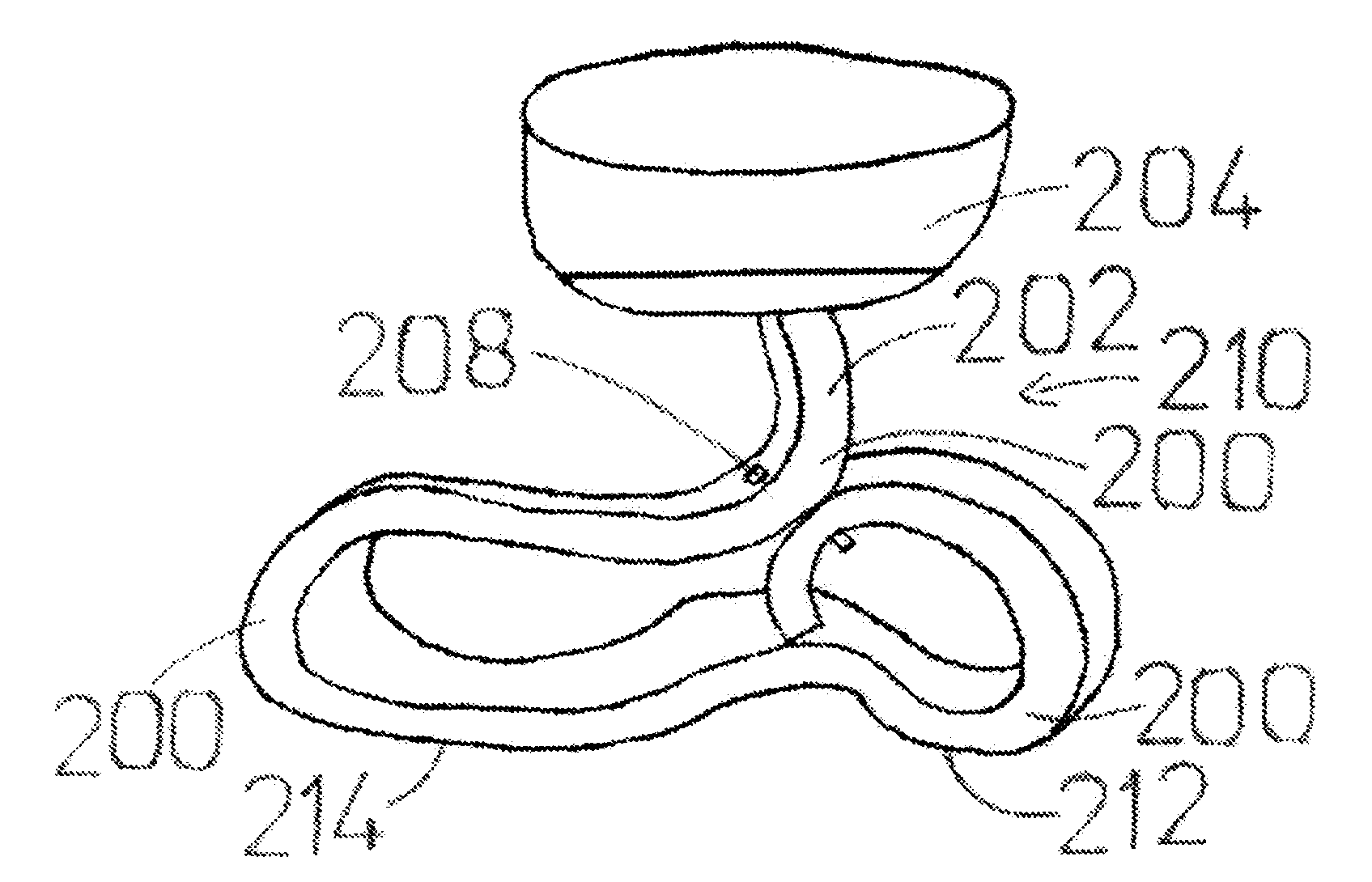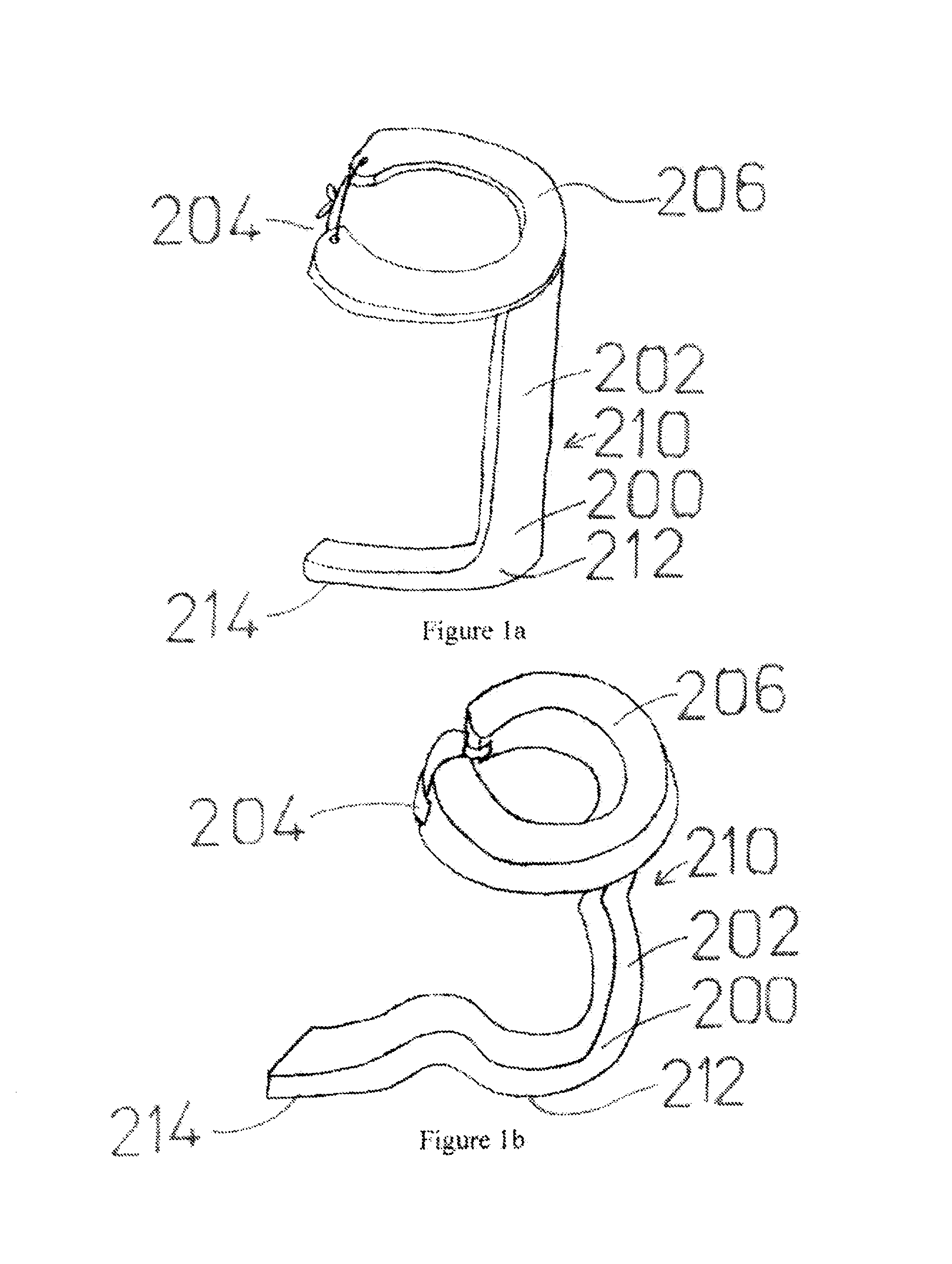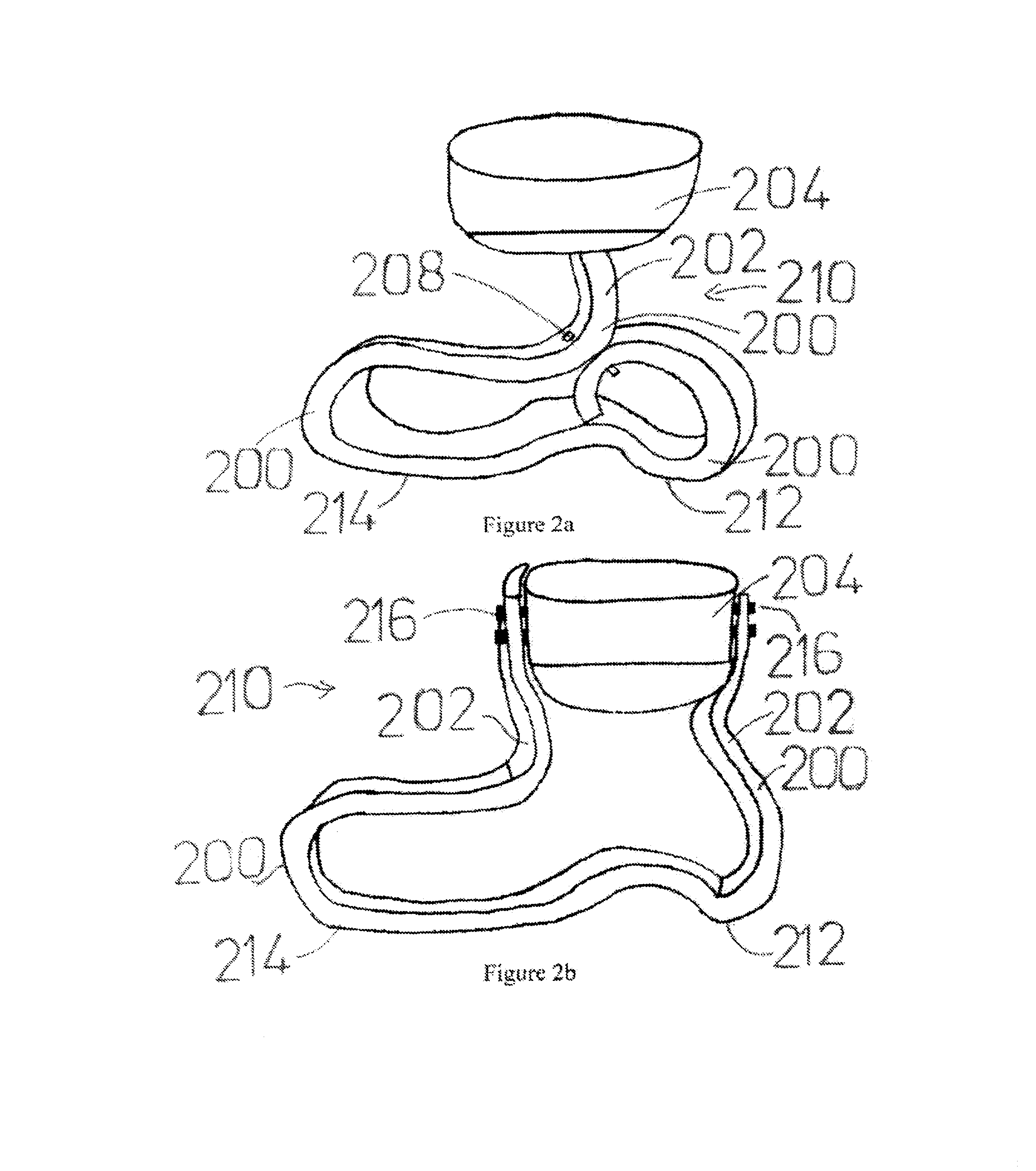Method of fabricating, artificial limbs incorporating superelastic supports
a technology of superelastic supports and artificial limbs, which is applied in the field of methods of fabricating and artificial limbs incorporating superelastic supports, can solve the problems of limiting the normal degree of bending, shock absorption, rotation, force exerted upon the movement of the artificial appendage, and not restoring the near-normal performance of the appendage, etc., to achieve the effect of stabilizing anatomic structures, restoring motion of non-functional limbs,
- Summary
- Abstract
- Description
- Claims
- Application Information
AI Technical Summary
Benefits of technology
Problems solved by technology
Method used
Image
Examples
Embodiment Construction
[0031]The following is a detailed description of the presently best-known modes of carrying out the inventions. This detailed description is not to be taken in a limiting sense, but is made merely for the purpose of illustrating the general principles of the inventions.
[0032]This specification discloses a number of embodiments, mainly in the context of appendage replacement, reinforcement, and performance enhancement for artificial limbs, and braces. The appendages that the embodiments may be modified to address include the foot, the leg below the knee, the leg extending above the knee, the hand, the arm below the elbow, the arm extending above the elbow, and the arm including the shoulder. Two or more artificial limbs and braces of the invention may be combined with a variety of mechanisms that are able to coordinate the operation of the artificial limbs and braces to satisfy the performance requirements for multiple replaced appendages or nonfunctional limbs.
[0033]Nevertheless, it...
PUM
| Property | Measurement | Unit |
|---|---|---|
| length | aaaaa | aaaaa |
| superelastic | aaaaa | aaaaa |
| degree of bending | aaaaa | aaaaa |
Abstract
Description
Claims
Application Information
 Login to View More
Login to View More - R&D
- Intellectual Property
- Life Sciences
- Materials
- Tech Scout
- Unparalleled Data Quality
- Higher Quality Content
- 60% Fewer Hallucinations
Browse by: Latest US Patents, China's latest patents, Technical Efficacy Thesaurus, Application Domain, Technology Topic, Popular Technical Reports.
© 2025 PatSnap. All rights reserved.Legal|Privacy policy|Modern Slavery Act Transparency Statement|Sitemap|About US| Contact US: help@patsnap.com



